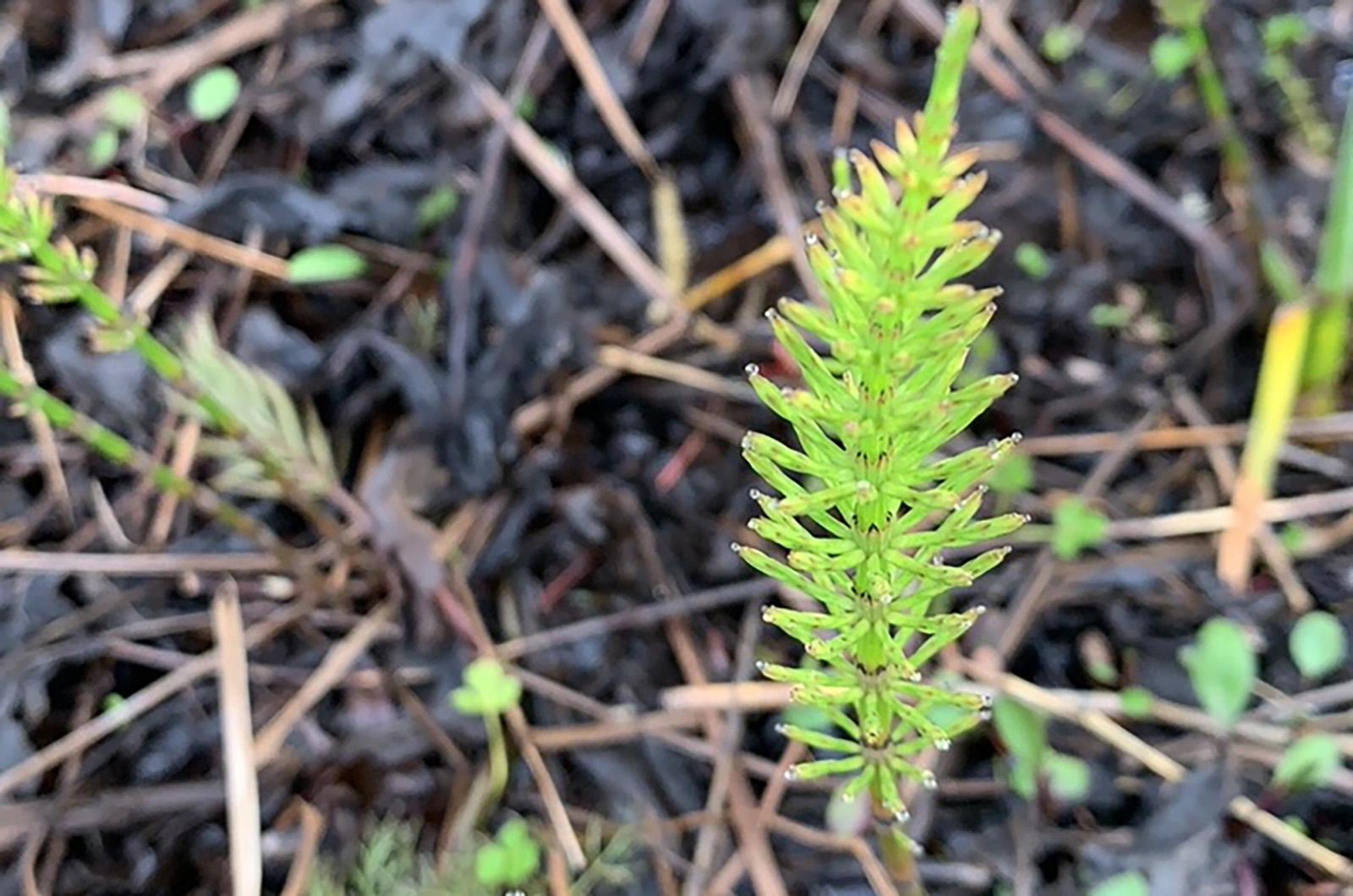Wild horses couldn’t drag me away.
On my belly on a boardwalk, my face was up close and personal with a peculiar profusion of plants. They looked like a forest of miniature pine trees emerging from the saturated wetland. Saddled with curiosity, it only took a minute to figure out their identity.
There was no reason to rein in my enthusiasm for the species that I had spied. I was in the company of an elder states-plant: the common horsetail, Equisetum Arvense — whose ancestors were eaten by the dinosaurs. As one of the oldest known plant species, scientists estimate that horsetails were present more than 300 million years ago in a similar form.
This ancient survivor could be called a horse of a different color, since it comes in two shades, brown and green, each of which has its own distinctive look and function. In spring, the first emergence of horsetail appears as a brown stalk with a head that will deliver spores. This is the fertile state of the plant and is short-lived, persisting only a few weeks to develop and release its spores. The asparagus-like stalk is made of hollow jointed stems and rises to only twelve inches above the ground.
The next stage of this primitive plant is the sterile one. Its green shoots emerge and its leaves are minimized to appear as scales that resemble the aforementioned pine trees. Only the green stem of this plant is photosynthetic; those scales lack this ability. These shoots are taller, reaching up to twenty inches. Both shoots are edible, but should be differently prepared. The fertile buds and shoots can be consumed like asparagus, raw, sautéed, pickled or steamed. The green sterile stalks have a few more rules if you want to eat them. Use the tips of the plant only and avoid the stems, which interfere with your vitamin B and thiamine uptake. Those tender green tips can be steeped as tea and are reportedly good for hair, nails, bones, bladder and kidneys.
Silica is secreted by the sterile green bushy stems in the form of crystals, which has led to a few other household uses of horsetails. These crystals make the plant abrasive and so have been employed as a natural scrubber to polish pewter, tin, and other metals, clean plates, pots and other household items and utilized to remove resin buildup from the wheels of a hurdy-gurdy (a traditional string instrument).
Down through the years, this fascinating flora has earned many aliases, including bottle brush, paddock pipes, pewter wort, scouring rush, toad pipe, jointed monkey grass, shave grass, mare’s tail and snake and skeleton grass.
Traditional medicine prescribes horsetail as a diuretic, antioxidant, salve for brittle nails, conditioner for hair and treatment for tuberculosis and osteoporosis. Herbalists trot out many of its diverse benefits.
For all of this plant’s horsing around, its value has shown itself to far exceed any desire to put it out to pasture.
Suzan Bellincampi is director of the Felix Neck Wildlife Sanctuary in Edgartown, and author of Martha’s Vineyard: A Field Guide to Island Nature and The Nature of Martha’s Vineyard.




Comments
Comment policy »